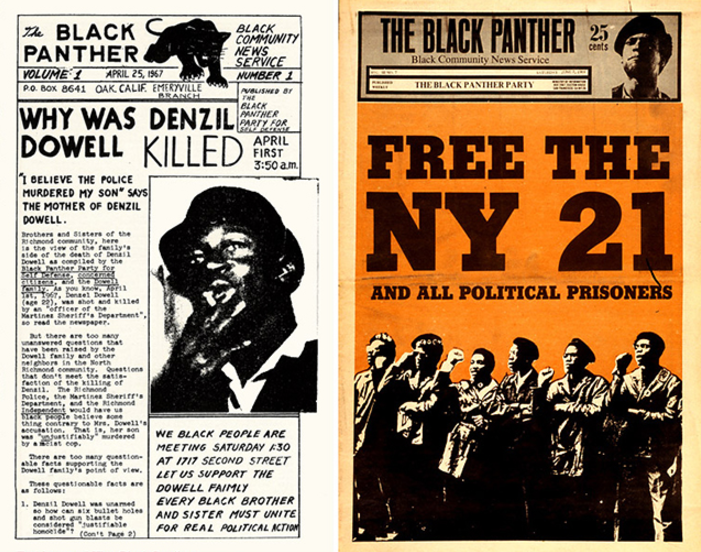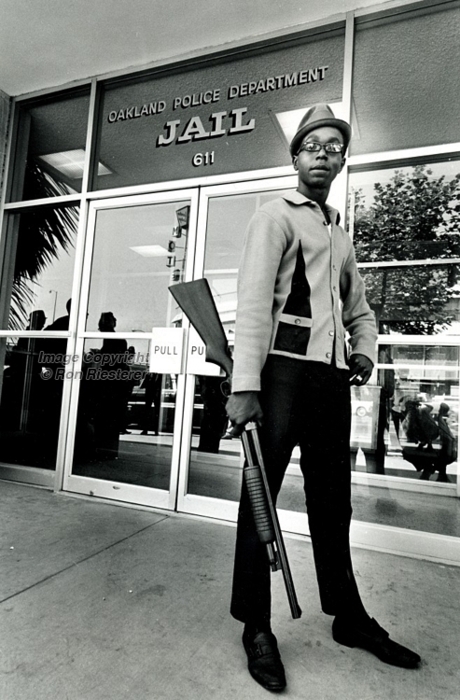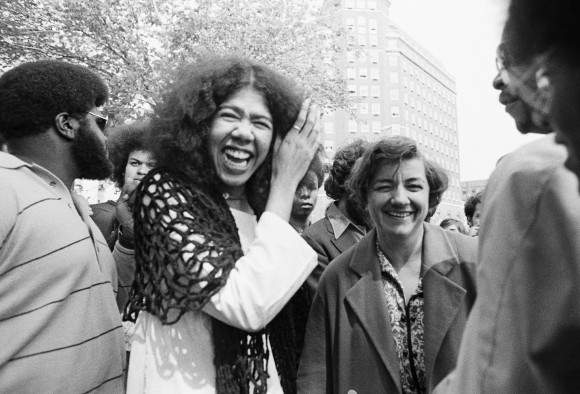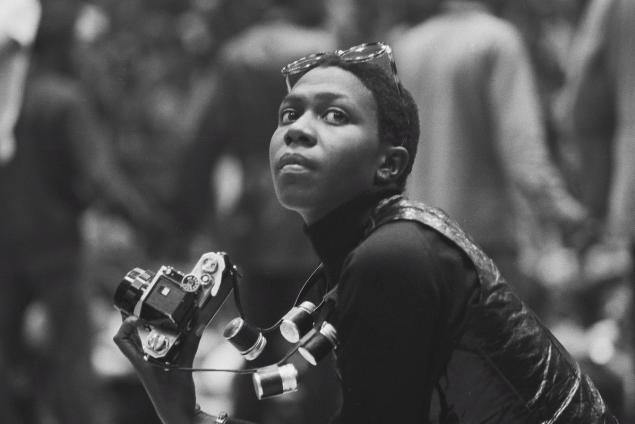Using Intelexual Media Primers, you can get all the information you need on one complex subject in thirty minutes to an hour! This primer contains six videos, a supplementary essay, five FAQS, and a list of resources for your learning pleasure!
A lot of modern day black people claim to love the Black Panthers, but how deep does that love run? Is the love built on the thrill of supporting a taboo revolutionary group or is it built on sincere gratitude and willful critique? The Panthers were not perfect, and loving them involves examining the things they got wrong as much as the things they got right. In grade school, I learned little about the Black Panthers. The group was an abstract entity that none of my teachers bothered to explain. I didn’t learn about the scope of their activities, creed, or history until college. In the turbulent racial atmosphere we live in now, it is pertinent that all black people understand exactly what a revolution is. As you’ll learn in this primer, the Black Panthers struggled to truly define what revolutionary action was. In addition to checking out an essay on MCM Fred Hampton, keep reading for a crash course on The Black Panther Party.
Humble Beginnings
The Black Panther Party for Self Defense was founded in October 1966 by Oakland residents Bobby Seale and Huey P Newton. They, like a growing number of black Americans, were growing fed up with the pacifism of Civil Rights leaders. Together they prepared a 10 Point Program with principles based in Maoism, Marxism, and other socialist literature.
As their original name implied, an important aspect of the Black Panther Party for Self Defense was their belief in armed resistance. Minister of Defense Huey P. Newton orchestrated armed Panther patrols to keep an eye out for police brutality. By January 1967 the party had a handful of members and an official office. Membership surged thanks to an alliance with the SNCC. Stokely Carmichael joined and added to the party’s prestige. Just the year before Stokely had initiated a failed purge of white members from the SNCC in the name of Black Power. Though the Panthers would have non-black members, the message of black power was nevertheless absorbed.
In February of 1967 the Panthers elevated their visibility when they escorted Betty Shabazz to a meeting. According to Jakobi Williams, “Twenty armed Panthers marched Shabazz into the magazine’s office, which horrified the staff and eventually led to an armed confrontation with police outside the building.” On April 1st 1967, an unarmed black man named Denzil Dowell was murdered by a cop. The Black Panthers reported the news in the very first edition of the Black Panther Party Community News Service. This newsletter was a vital part of the movement, eventually growing to a circulation of over 250,000 at its peak. In the following two minute history video, I explain how the Panthers and their guns were catapulted to prominence.
These incidents only contributed to the party’s fierce reputation. Later that same year in October, Huey P Newton got into a shootout with two police officers and one was killed. It is unclear who initiated the altercation, but Huey was arrested and held for murder. The Black Panther Party only grew in popularity, as did their newspaper. Minister of Information Eldridge Cleaver took over while Huey languished in jail. His wife Kathleen then kicked off the Free Huey Movement.
Growth, the Free Huey Movement, and Attracting the Attention of the FBI
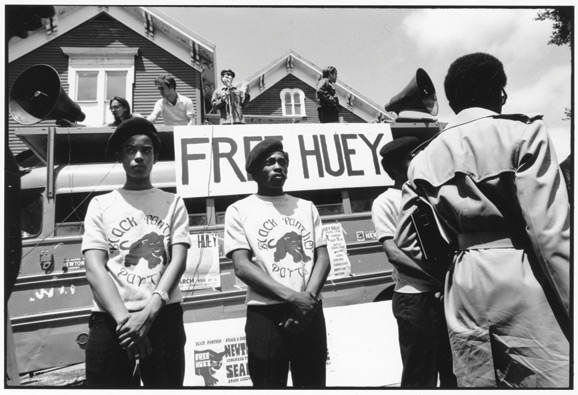
If twitter had been around in 1968, #FreeHuey would have been a popular hashtag. Rallies were held on college campuses. T-shirts were sold. Across the country, new chapters of the Black Panther Party popped up. In the aftermath of the dying non-violent civil rights movement, something about the Panthers’ “by any means necessary” attitude really resonated with people. According to Jakobi Williams, “The Panthers believed in reaching out to the lumpen proletariat—America’s underclass society, which included common criminals and gang members whose actions demonstrated their rejection or break with America’s political and economic structures and expectations.” While the Civil Rights Movement basked in respectability politics, the Panthers- in their leather jackets, berets, afros- was like a jolt to the system.
In April, Martin Luther King Jr was murdered. Just a few days after, Eldridge Cleaver initiated a gunfight with police that got fellow Panther member Bobby Hutton murdered. Cleaver fled America to Cuba, and then moved to Algeria. David Hilliard then took control of the party while Huey remained in jail.
The year before, J Edgar Hoover had turned the sights of COINTELPRO onto the Black Panther Party. As part of the programs desire to destroy the movement, the party was sabotaged from within.
In the following two minute history video, I explain the Ghetto Informant Program, a segment of the FBI’s COINTELPRO.
Extreme Turbulence
Several black panthers got into armed conflicts with police. Black Panther Party residences and offices were raided, some without warrants. Offices in Des Moines and Newark were firebombed with no explanation or investigation. Property was seized and members were harassed. Armed altercations were instigated between the Panthers and other rival groups by the FBI. The relationship between the Black Panther Party and the SNCC was sabotaged, driving Stokely Carmichael away. During the same time Huey was appealing his manslaughter conviction and the party was grappling with harassment from the FBI and law enforcement, attempts were still made to empower the black community.
Panther Pads were also established. These communal residences included around the clock armed security, shared chores, and basic necessities for living. In April, 21 leading Black Panther members in New York were arrested for a variety of terrorist charges. Community organizing and a 13 month trial led to an acquittal for all involved.
Despite all the good, shit was not all gravy in the party. After all, the party had grown into something larger than its founders had planned for. “There is no single BPP…there are many, unified in one national organization, to be sure, but separated by the various regional and cultural influences that form and inform consciousness,” wrote Mumia Aba Jamal. The individual chapters across the country operated on their own terms, and some were more reckless than others.
In May 1969, the New Haven Connecticut chapter was suspicious of member Alex Rackley. Concerned that he was a spy from the FBI, he was tortured by several members (Lonnie McLucas, Ericka Huggins, and Warren Kimbro) at the direction of chairman George Sams. After two days of being doused with boiling water, he admitted to being an informant. He was then murdered. Later, George Sams accepted a plea deal and testified that Bobby Seale had ordered the murder and also pointed blame at Ericka Huggins. Both were arrested for conspiracy, but beat the case. Its heavily implied that Sams was the actual informant, and that he orchestrated the whole thing.
Throughout the rest of 1969, more offices were raided and more Panthers were harassed. J Edgar Hoover described the Free Breakfast Program as “the best and most influential activity going for the BPP and as such, is potentially the greatest threat to efforts by authorities . . . to neutralize the BPP and destroy what it stands for.” The year ended on an especially sour note with the assassination of Fred Hampton. To read more about him, click here. Four days after he was murdered, 300 SWAT officers stormed the Los Angeles office and opened fire.
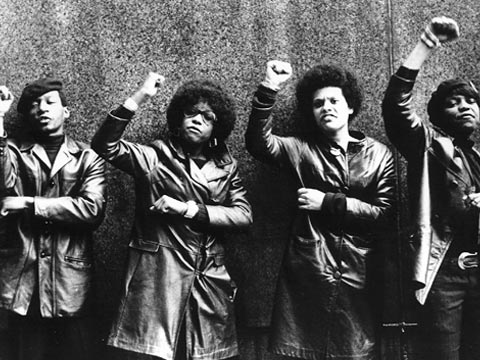 Women and Attempts to Reform the Party
Women and Attempts to Reform the Party
When Huey got out of prison in 1970, he and other leaders began looking internationally for inspirational ideas about revolution. Eldridge Cleaver, in charge of the newspaper, began reprinting writings from North Korea. Other leaders traveled to or studied countries like North Korea, China, Cuba, Algeria, and Trinidad. By 1971 the frequent harassment of leaders caused a lot of them to flee the country. It was also in February 1971 that the group splintered between Huey P. Newton and Eldridge Cleaver. While Huey saw the wisdom in achieving change through reform and politics, Cleaver believed in violence. As reported by a 1971 newspaper, “Cleaver… disapproves of Newton’s willingness to fight the Party’s battles in the courts and to make concessions to public relations. Cleaver has said that he would prefer the Party to follow the lead of Jonathan Jackson into violent action to free political prisoners.” Cleaver also believed that social programs were undercutting the party’s primary purpose. Newton thought attacking police was a problem. By this time Cleaver was living in Algeria, but his supporters retreated from the Black Panther Party all the same.
“Black Power” took on several new lives as groups of extremists in proximity to the Black Panther Party worsened their already tarnished reputation. One such group was the Black Liberation Army, formed by Assata Shakur and Eldridge Cleaver. It was mainly comprised of former Panther members, and they were more anarchistic and extreme than the Black Panthers. They committed numerous murders, robberies, and assaults. In 1972, Newton shut down a large chunk of the Black Panther Party offices across the country and began consolidating power in Oakland in an effort to take back control. According to Elaine Brown,“The numbers were dwindling and the force of the party was dwindling so it only made sense to consolidate and see what we could do with what we have.” Said Kathleen Cleaver, “Newton announced that the Panthers had been wrong to attack police, that they would return to church, participate in electoral politics, support black capitalist ventures, and work within the system.” This is when he began vying for a political takeover in a five year plan. Several Panthers would go on to run for office in 1972 and 1973, winning minor offices around California. Bobby Seale ran for mayor of Oakland and came in second place.
In 1974, more changes occurred. First of all, accountant Betty Van Patter was murdered after finding irregularities in the Black Panther Party’s finances. Nobody was ever tried in her murder, but it is almost certain she was taken out by the Panthers. It was also in 1974 that Huey kicked Bobby Seale out of the Panthers, and many members loyal to him left too. The increase of male members in exile and the splintering of party loyalty meant women soon took on an even more prominent role. As early as 1969 most of the rank and file members were women, but things were thrown into high gear. Elaine Brown became leader of the party when Huey fled for Cuba after murdering an 18 year old sex worker named Kathleen Smith. It was around this time that 2/3 of the party was made up of black women. While on paper Black Panther Party members called for treating women equally, actions from Black Panther Chapters were not congruent.
In “Don’t no woman have to do nothing she don’t want to do”: Gender, Activism, and the Illinois Black Panther Party, Jakobi Williams recounted the experiences of a former female member:
“She recalled that some female members were called “prostitutes,” comments were made about “their big booties,” she was once called a “banana face bitch,” and some women faced the danger of being “sexually exploited if she didn’t have the wherewithal to stand up for herself.” Harris continued, “[I]f you were a woman . . . it depended upon your position in the Party how you were treated.” She explained that women in leadership positions or “women who were in relationships with the [male] leadership” were not subjected to such treatment (Harris interview)”
Some chapters allowed sexism and misogyny to flourish. Other chapters, like the revered Illinois branch, did what they could to protect women. According to former party member Hank Gaddis:
“[T]he Milwaukee Chapter had become blatant with renegade ideas, and so we were sent up there to assess the situation and take the appropriate actions. So we went up: Bob [Lee] and I went up to Milwaukee and we got there and we found that the leadership had declined into a group of male chauvinists that had basically put the sisters there into the role of indentured sex slaves and just rampant male chauvinism. Basically the sisters’ duties were to service the male leadership of the Chapter, and so we purged all those motherfuckers—all the males. We called them in . . . a brother named Walter Chesser and one named Deacon Gentry, and we talked to them and heard what they had to say, and then we told them, “Hey, we’ve been authorized to purge all of ya’ll. You’re purged, and then you’re gonna have to establish yourself to demonstrate that you’re worthy of representing an organization called the Black Panther Party.” And then what we did was, we put the sisters in charge, made them the leadership, and so Milwaukee began to reconstitute itself.”
Being in the party meant women sometimes had to act differently than they normally would. According to Assata Shakur:
“[A] lot of us [women] adopted that kind of macho type style in order to survive in the Black Panther Party. It was very difficult to say “well listen brother, I think that . . . we should do this and this.” [I]n order to be listened to, you had to just say, “look mothafucka,” you know. You had to develop this whole arrogant kind of macho style in order to be heard. . . . We were just involved in those day to day battles for respect in the Black Panther Party.”
Nevertheless, a woman served at the head of the Black Panther Party for three years. Under Elaine’s direction, the party continued to try to win on the political frontier. It was also under her direction that the Black Panther Liberation School was created. Brown remained leader until 1977 when Huey returned from Cuba. When Huey returned, he found that many of the male members were upset with how powerful women had became in the party. Many acted out with violence, humiliation tactics, or forced subordination. Elaine Brown once had to punish a male member who had beaten a female member for cooking his greens wrong. She left because of the stifling violence, sexism, and patriarchy she experienced during her time in charge. The final straw was the Newton-authorized beating of BPP member and school administrator Regina Davis. Her transgression was rebuking a male Panther. She was left with a broken jaw.
The Final Nails in the Panther Coffin 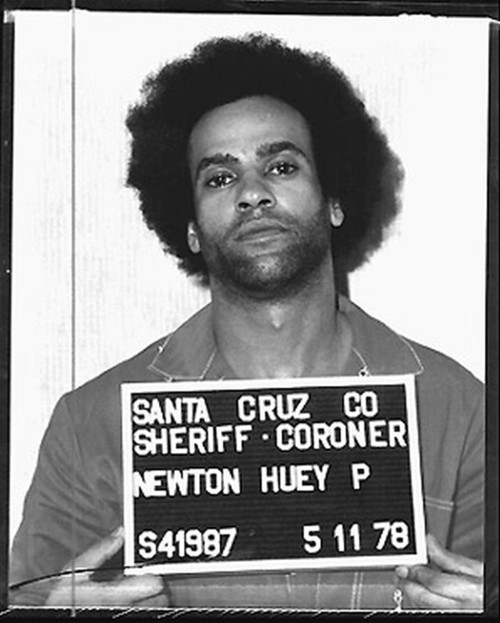
Though the party had been declining for 8 years by this point, things took a harsher nosedive. Newton was entangled with witness tampering and assassination attempts in his desperation to beat the pending murder charges against him for Kathleen Smith. Huey’s use of Black Panther Party resources (armed members) to serve his own selfish gain were the symbolic final nails in the coffin. The largely positive Black Panther Party had been turned inside out and reeked of negativity. It also didn’t help that members of the party were loyal to leaders who had their own egocentric agendas. In 1982, with a roster of less than 30 members, the party was officially dissolved. While a lot of the blame can be placed on the nefariousness of COINTELPRO, there are a few things to keep in mind. Despite their good intentions, the Black Panthers were not perfect. The Black Panther Party was not evil, but it was extremely problematic and contributed to its own destruction. Too often people’s perceptions of the Black Panthers are highly demonized or highly romanticized. Let’s keep some perspective.
First of all, several party leaders and members were actually involved in criminal activities that not only had nothing to do with the movement, but tarnished it as well. Huey P. Newton murdered an 18 year old sex worker for calling him a childhood nickname that he hated. He later tried to assassinate the key eye witness. Due to accurate rumors about infiltrators from the FBI, the Black Panthers also became too reliant as violence on a problem solver. This led to the beatings and murders of multiple members assumed to be on the payroll of the FBI. This kind of violence only made Black Panthers less worthy of sympathy in the public eye. In fact, these violent acts definitely distracted from Panther demands to release all black men from prison and jail. This brings me to my second point. Irrational demands and rash actions distracted from real issues. The combination of violence and hyperbole did not welcome mainstream curiosity in mass incarceration. The Black Panthers also failed to address sexism and misogyny in the party, as I noted above. Black women had become a majority in the party but somehow they still lacked the ability to address problems facing black women. They had to put race before gender. This definitely alienated members and weakened the party’s strength. Another problem worth noting was the Panther’s idolization of certain members, which created divisive cults of personality. Huey P. Newton and Eldridge Cleaver became two icons of the movement whose personal conflicts and evolutions took away from the party’s basic functioning. Eldridge promoted unrealistic and romanticized relations with Algeria and North Korea, while also encouraging violence that only widened the target on the back of the party. Huey was violent in his personal life, and he eventually stole money from the Black Panther school to support his drug and alcohol addictions. When these two men crashed and burned, supporters loyal to them (and not the movement) did the same. When Eldridge left the party, so did many of his followers. The last issue? The loosely affiliated chapters undercut overall messages of black unity.
While they got a lot wrong, the Panthers also got a whole bunch of stuff right! The Panthers had amazing ideas and actually worked to implement them. I truly believe had the government not set out to destroy them, they would have evolved. I also believe that if given the chance, over the years the group’s’ tendency to succumb to sexism and petty rivalries could have been targeted and eradicated. But alas. They themselves were targeted and eradicated, not their problems.
Even though the Black Panthers lasted for less than 15 years, they did greatly influence our generation. For starters, their belief in black people controlling their own media was major. The Black Panther Newspaper was a huge part of their success, and circulated in the hundreds of thousands during peak popularity. Secondly, the Black Panthers were deeply critical of capitalism, and incorporated socialist principles as pillars of black self reliance. This is evident by free breakfast and clothing programs created for the benefit of the black community. The Panthers encouraged black unity and self reliance, along with self policing to end police brutality. It is worth noting that police brutality was not an issue explicitly targeted by the Civil Rights Movement while they were being assaulted with fire hoses, batons, and snarling dogs. Another thing the Panthers did right was attempt to penetrate the political sphere. In the early 70’s, Huey Newton, Bobby Seale, Elaine Brown, and others understood that legislation and reform were key aspects of the revolution. It was another component of “by any means necessary”. This has actually been addressed by Elaine Brown in regards to Black Lives Matter.“They will protest but they will not rise up in an organized fashion, with an agenda, to create revolutionary change,” noted the 73-year-old activist. “We advocated community self-defense organizations to be formed, so that we would not be assaulted by the police, so that we would bear arms and assume our human rights.”
The Black Panthers also did right by making progressive steps to include women in the party ranks. Doing so gave some women more power than they had ever had before in their personal lives. It also encouraged political activism in women. Lastly, the Black Panthers cultivated self love and black beauty. While civil rights leaders bent to respectability politics, Panthers weren’t apologetic about their style of dress, hair, or anger at the system.
FIVE FAQ
- Was Angela Davis a member of the Black Panthers?
- No. She was an associate. They rallied behind her as a political prisoner when she was falsely charged with kidnapping and first degree murder in 1970.
- Did the Black Panther Party ever initiate acts of violence against the police or were they always the victims?
- While a plethora of events were started or instigated by the FBI, some acts of violence (like Eldridge’s attack in April 1968) were rash decisions made by nobody but the Panthers. Eldridge actually told the press that the attack was initiated by police, which created sympathy for the Black Panthers from the public. When this was revealed to be a lie, there was little love to be had for the Black Panther’s message about police brutality. The ambush was cold blooded murder to the public, no matter how many times they had been victims of the same crime at the hands of police. Even worse, these kinds of ambushes would always look that way.
- Who were some Black Panthers I absolutely should know and look up?
Bobby Hutton was the first person to join, when he was 16. He was also the first member killed. Joan ‘Tarika’ Lewis was the first woman to join the party, and she was also 16. She said, “I put down my violin and picked up a gun.” Ericka Huggins was well known for her poetry, in addition to her false incarceration. Afeni Shakur was one of the Panther 21 in New York, and gave birth to Tupac while still a member. Assata Shakur was falsely accused of killing a state trooper and spent her life on the run from the American government. She is on America’s Top 10 Most Wanted list. Below is a short video about four members who had the most influence over the party’s ideology.
4. What were the key differences between the Black Panther Party and the Civil Rights Movement?
- They weren’t into respectability politics. They did not endorse non-violence. They were more “radical”, because in the beginning they wanted to rebel against the American government, not work with it. They initially believed that communism was a key component to liberation and were extremely anti-capitalist. They were also not religiously affiliated, whereas civil rights leaders were often tied to the church.
5. In Forrest Gump there were white men at the Black Panther Party meeting. Cmon. Was that even realistic?
- Yes! Black Panthers believed in multi-racial alliances. There was even an associated group, The White Panther Party, that was established when Huey P. Newton was asked what white people could do to help the Black Panthers. There were also Asian and Latinx members.
Black Panther Party Literature and Films
This primer was comprehensive, but there is still a treasure trove of knowledge to discover about the Black Panther Party. Here are some resources to get you started.
- The Assassination of Fred Hampton (Available on Youtube)
- The Black Power Mixtape (1967-1975) *****Available on Netflix
- The Black Panthers: Vanguard of the Revolution
- Liberation, Imagination, and the Black Panther Party: A New Look at the Panthers and Their Legacy (edited by Kathleen Cleaver and George N. Katsiaficas)
- Black Against Empire (Joshua Bloom and Waldo E. Martin)
- On the Ideology of the Black Panther Party (Eldridge Cleaver)
- A Taste of Power: A Woman’s Story (Elaine Brown)
- Revolutionary Suicide (Huey P Newton)
- “Don’t no woman have to do nothing she don’t want to do”: Gender, Activism, and the Illinois Black Panther Party (Jakobi Williams)
- “No One Ever Asks What a Man’s Role in the Revolution Is” (Tracyee A Williams)
- Bobby Seale Explains Panther Politics (Bobby Seale)
-
Eldridge Cleaver, Black Panther Who Became G.O.P. Conservative, Is Dead at 62
- Assata (Assata Shakur)
-
“We’re going to defend ourselves”: The Portland Chapter of the Black Panther Party and the Local Media Response (Jules Boykoff and Martha Gies)
If you enjoyed this primer, please consider making a donation to Intelexual Media here!


